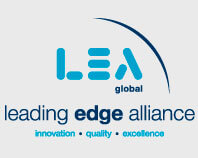It is no secret that healthcare regulatory compliance is front and center in the eyes of the United States Department of Justice (DOJ), the Department of Health and Human Services – Office of Inspector General (OIG) and the Centers for Medicare and Medicaid Services (CMS). For at least two decades now, healthcare entities have been under the magnifying glass as it relates to compliance with federal healthcare reimbursement regulations. Countless regulatory audits, whistleblower claims, qui tam investigations, penalties and fines, settlements and mandated Corporate Integrity Agreements and monitorships have casted at shadow over the healthcare industry.
Over this period, emphasis has been placed on the importance of healthcare organizations having compliance programs in place. The Federal Sentencing Guidelines and the OIG promote seven compliance pillars that should be integrated into an organization – standard policies and procedures; compliance program infrastructure; education and training; auditing and monitoring; screening and reporting mechanisms; disciplinary actions; and investigation and remediation of issues. No matter where you look or whom you listen to, the compliance periodicals, experts and conferences have structured their messaging and topics around these elements. The message? – Implement, implement, implement!!
But recently, the message has shifted. No longer is the first assumption that healthcare entities are not focused on implementing compliance measures. In fact, if organizations do not have at least minimal processes in place that address the compliance elements in some form or fashion, then the common perception is that leadership might truly be asleep at the wheel or, even worse, purposefully engaging in inappropriate activities that regulators and courts probably would not appreciate. The message now is Evaluate, Evaluate, Evaluate!!
In February and March 2017, respectively, the DOJ and OIG issued their own versions of compliance program evaluation guidance and metrics. The DOJ’s release was in the form of insight into its processes and the factors it considers when evaluating corporate compliance programs as part of an investigation of an entity. The OIG’s release was presented as a tool or practice aid for compliance professionals to use when evaluating the effectiveness of a compliance program. While the DOJ’s guidance stems from reactive types of evaluation exercises and the OIG’s guidance comes across as a more proactive assessment means, they both overlap as far as the topics of interest and the expected elements of an effective compliance program are concerned – engaged leadership; documentation; accessibility and familiarity across the organization; communication; investigation techniques, resolution and follow-up…and the list goes on and on.
To review the DOJ and OIG guidance, click on the links below:
- DOJ Evaluation of Corporate Compliance Programs
- OIG – Measuring Compliance Program Effectiveness: A Resource Guide
Learn More
Bennett Thrasher’s Dispute Resolution & Forensics professionals are seasoned in the conduct of regulatory compliance reviews. If your organization needs a compliance effectiveness evaluation assessment, or if you need guidance regarding the design and implementation of critical compliance elements, contact us by calling 770.396.2200.



